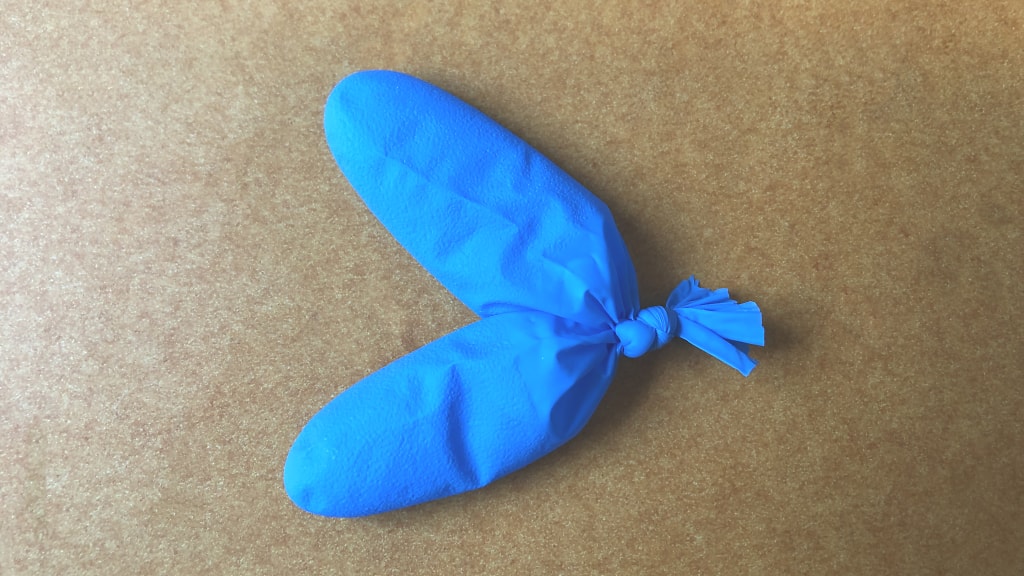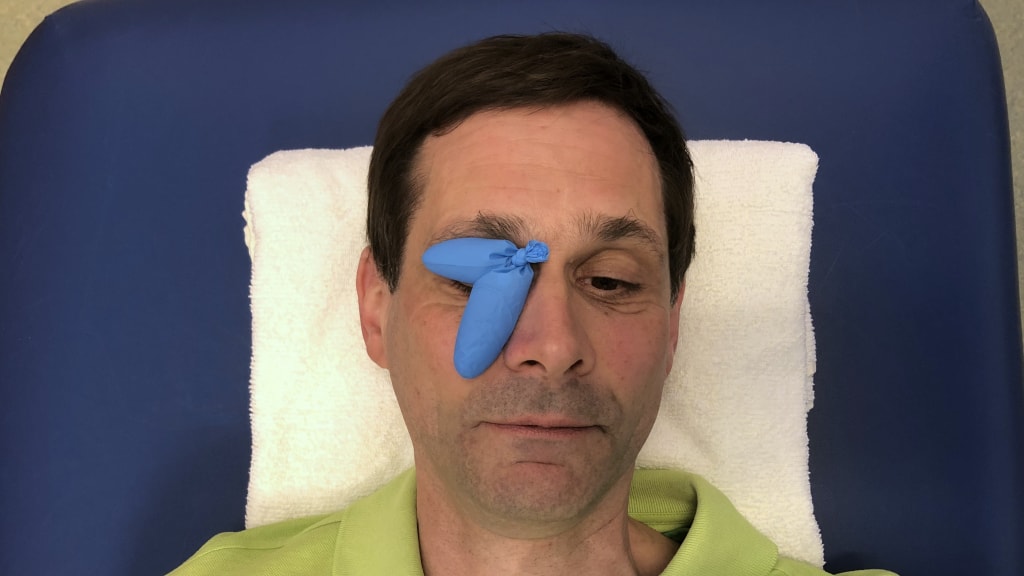05 May 2023 | Claudia Gratz
Practical tip for eyelid closure
How a simple assistive device can maintain persistent eyelid closure in peripheral facial nerve palsy during the therapy session.
The problem
In peripheral facial palsy, the eye is often affected by partial or complete paresis of the orbicularis oculi muscle. As a result, the upper and lower eyelid of the affected side lose their ability to react.
Patients are unable to adequately protect themselves against wind, sun and foreign particles from the air, and it is no longer possible for them to narrow or close their eyes quickly.
Often the eye remains completely open due to the absence of eyeblinking. The continuously opened eye, dries out and can suffer serious damage as a result.
The protection of the eye is therefore of particular importance in the treatment.
Frequent eyelid closure is important
One aspect of treatment is the preservation of passive mobility, especially of the upper eyelid, as well as decreasing the tension of the elevator of the upper eyelid . During treatment, the eye should be supported to close passively as often as possible.
The supine position is often a good choice for the beginning of treatment.
Especially after mobilization in the area around the eye , it is desirable that the eyes can remain closed while other areas of the face are treated. However, the affected eye is often reopened partially or completely by the tension of the eyelid opener, the levator palpebrae superioris muscle.
Getting your hands free


A simple, homemade assistive device can support continuous eyelid closure. This enables the therapist to use both hands freely for the further treatment of the face, instead of having to use at least one hand to prevent reopening of the eye.

You take a disposable glove and fill two fingers with enough water to get two grape-sized ovals. Here you have to try a bit, the 'grapes' must not be too plump. Then you tie a knot to prevent water loss and cut off the rest of the glove.
After the patient's eye has been passively closed, one 'grape' is placed on the upper eyelid. The other one is positioned alongside the nose, on the lower parts of the orbicularis oculi muscle, which is lifted slightly beforehand.
The water in the 'grapes' offers a flat, light weight, which facilitates upper eyelid closure and slight support for the lower eyelid. The water can be cool or warm according to the patient’s preference.

The patient’s home program
After instruction the patient can apply the two water-filled 'grapes' at home too, e.g. when resting on the sofa.
The 'grapes' are reusable. Possible residues from ointment or drips of eye medication can be wiped off with some washing-up liquid.
And for repeated cool application, simply put the water grapes in the refrigerator.





